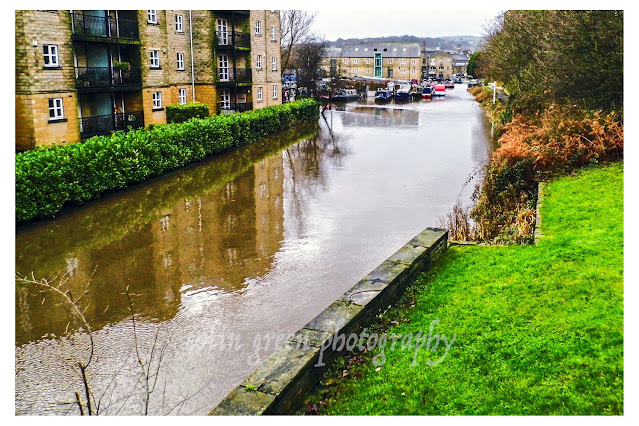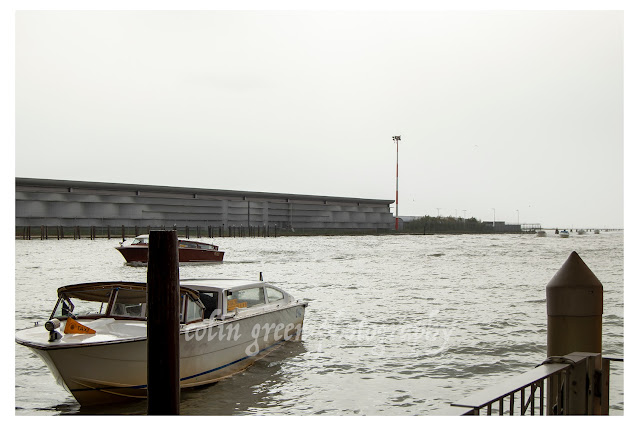The Boxing Day floods of 2015 are etched into the memory of the Calder Valley. On that day, a perfect storm of relentless rainfall and already-saturated ground caused the River Calder and its tributaries to swell, bursting their banks and unleashing a wave of devastation. While towns like Mytholmroyd and Hebden Bridge were hit harder, Sowerby Bridge didn't escape the deluge. These images, rediscovered and shared, offer a powerful, on-the-ground look at the impact of the floods on our community.
A Town Submerged
The photos, taken with a Polaroid is2132 bridge camera, serve as a stark reminder of the sheer force of nature. One image shows the River Calder surging near the Turks Head Footbridge, its muddy waters completely overwhelming the usual banks. What is normally a peaceful river is transformed into a raging torrent, encroaching on picnic tables and threatening nearby buildings.
The sheer volume of water is evident in another photo, where the river completely surrounds the Lockhart Mills complex. The water level is so high it nearly reaches the windows on the ground floor, illustrating the scale of the damage. At the Gas Works Bridge, the river's high water levels are captured from two different angles, showing the water's menacing rise, swallowing trees and reaching the very edge of the footbridge.
The Unstoppable Flow
The flooding wasn't limited to the river alone. The Calder and Hebble Navigation canal system, a vital part of Sowerby Bridge's heritage, also succumbed to the pressure. Photos of Tuel Lane Lock show water cascading over the lock gates, an unsettling reversal of its typical function. The lock, designed to manage water flow, was completely overwhelmed, highlighting the extraordinary volume of rain that fell.
The images of the canal near Kirkham Turn and the Calder & Hebble Navigation show the water level rising to meet the surrounding land, turning the waterway into a vast, muddy lake. Houseboats, usually resting serenely, are caught in the swirling currents, their moorings tested by the floodwaters.
A Community's Resilience
While these pictures document the physical devastation, they also implicitly tell a story of resilience. The 2015 floods were the worst to hit the area since the 1960s, causing millions of pounds in property damage. Yet, from this shared hardship emerged an incredible community spirit. Neighbours helped neighbours, businesses were rebuilt, and the community came together to clean up the aftermath.
These photographs are more than just records of a flood; they are a testament to the power of nature and the enduring strength of the people who call the Calder Valley home. They remind us to respect our environment and to remember the challenges we have faced and overcome together.
 |
| The flooded Calder & Hebble Navigation and Rochdale Canals from Chain Bridge. |
 |
| The Calder & Hebble overflowing at Chain Bridge. |
 |
| Rochdale Canal from Tower Hill Bridge. The towpath can normally be seen to the right of the canal, the small wall probably prevented the car park and nearby town centre from further damage. |
 |
| Tuel Lane Lock gates flowing over. |
 |
| The River Calder flowing past Kingfisher Chase towards Lockhart Mills. The levels is normally 15 - 20ft lower than this. |
 |
| The flooded Kirkham Turn. This is where the Rochdale canal joins the Calder & Hebble Navigation. |
 |
| Flooding at Tuel Lane Lock on the Rochdale Canal. |
 |
| Very High River Calder flowing past the Weaving Shed Apartments (right of picture) and Dugdales Mill left of picture. Dugdales was severely flooded during this event. |
 |
| River Calder at Gas Works Bridge, considering the damage done to Cromwell, Copley and Elland Bridges, I was surprised that Gas Works Bridge still stood after the floods. |
 |
| River Calder at Gas Works Bridge, looking more like a dam head than river crossing. |
 |
| High level River Calder at Lockhill Mill, much of the red brick building was damaged beyond repair by the flood and demolished the year after. |
 |
| River Calder from above the Turks Head Beer Garden, the lower half of the iron footbridge was just in to the flooded area. Dugdales mill storage yard can be seen heavily flooded in the background. |
Please take a moment to share this post, follow me on social media, and explore my work on Clickasnap and Photo4Me using the links below. Your support means a lot!
All the pictures remain the copyright of Colin Green.
























